Part II: Design Criteria: Problems And Solutions
3. Miscellaneous High Voltage Design Problems
A. Further Notes on Insulation, Construction
i. Lucite, the HV "Wirehead's" Friend! [7]
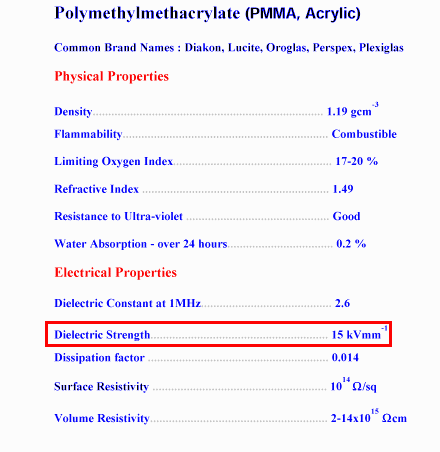
Some Properties of Lucite

The rectifier bridge from a (factory pre-busted) Sorenson 1061 supply.
This structure, like the rest of the guts of the supply, is mounted on
Lucite. The whole thing is immersed in dielectric mineral oil, rated
for a minimum breakdown voltage of 25kV/mm. Note the smooth, hemispherical
surfaces of the brass contacts. More on that follows.
ii. The "Good Oil".
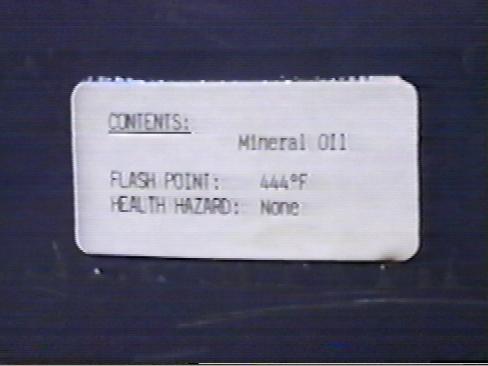 Dr. William S. Bickel's aged, private reserve. I declined his
generous offer, not knowing more about this particular oil.
Dr. William S. Bickel's aged, private reserve. I declined his
generous offer, not knowing more about this particular oil.
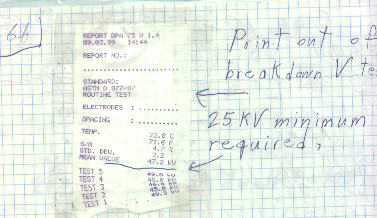 Rather than risk a "brand new" (27 yr. old) supply on oil which probably
had gathered moisture and other impurities, it was decided that Tucson
Electric Power would be tapped for some free virgin stuff. Catch-phrases
like "fusion research", "progress" and "starving student" were invoked
and voila! the oil was obtained. The mean breakdown voltage
was tested on the spot at TEP at 47.2 kV/mm, almost twice what Sorenson,
specified. No flashover or even detectable leakage current occurred
while "aging in" the oil. There have been no problems with
the supply since it was started.
Rather than risk a "brand new" (27 yr. old) supply on oil which probably
had gathered moisture and other impurities, it was decided that Tucson
Electric Power would be tapped for some free virgin stuff. Catch-phrases
like "fusion research", "progress" and "starving student" were invoked
and voila! the oil was obtained. The mean breakdown voltage
was tested on the spot at TEP at 47.2 kV/mm, almost twice what Sorenson,
specified. No flashover or even detectable leakage current occurred
while "aging in" the oil. There have been no problems with
the supply since it was started.
iii. Raceways, More on Wiring Insulation
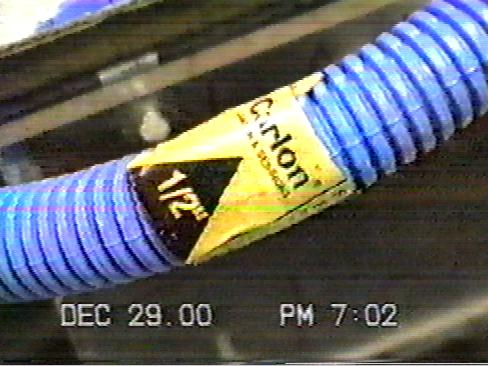 Electro-Nylon Tubing (ENT) Provides supplementary insulation while
supplying a raceway in which a grounding conductor can be run to protect
against RF, shorts and mechanical injury to the conductor.
Electro-Nylon Tubing (ENT) Provides supplementary insulation while
supplying a raceway in which a grounding conductor can be run to protect
against RF, shorts and mechanical injury to the conductor.
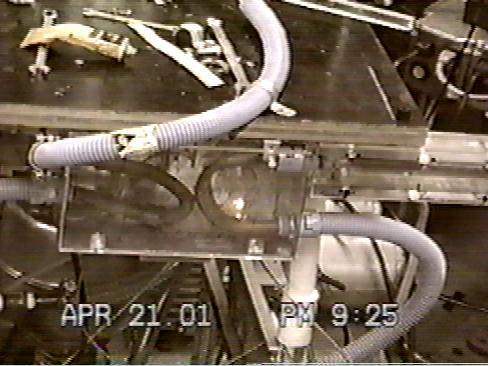 Load resistor(s) housed in Lucite box. Wire junctions to the resistor
are a likely place for arccing. Machine screws made of nylon.
Power leads are connected by HV banana plugs and held in place by threaded
ENT connectors. Wires are further insulated with latex tubing in
metal junction box, since there are splices in there.
Load resistor(s) housed in Lucite box. Wire junctions to the resistor
are a likely place for arccing. Machine screws made of nylon.
Power leads are connected by HV banana plugs and held in place by threaded
ENT connectors. Wires are further insulated with latex tubing in
metal junction box, since there are splices in there.
B. Ion Optics, Sharp Edges, Points, Cracks and Other Sources of
Grief
i. Flux and Charge Distibution Near Sharp Edges
Recall the hemispherical contacts on the rectifier bridge? Mathematicians
abhor discontinuities and so do electrons. Recall that on a conductor
in an E field, charge will be distributed in such a manner
that there will be 0 potential in the conductor. [1] Note how the
flux density increases near the curved edges
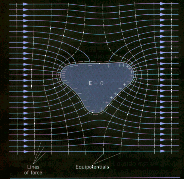
nearest the source. The charge density likewise increases.
Now bring these curves to a pointed, sharp edge. The result?
Surface charge density tends to infinity! Arccing occurs. Observe
the glow around the threads of the brass screw at the base of the
system.
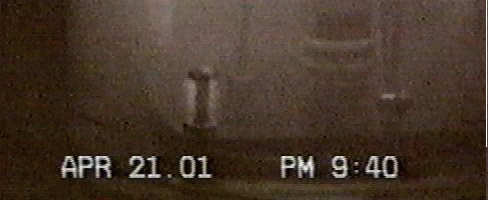
ii. Rude Surprises
Now suppose there was a small flaw in some crucial insulation, like
the 1/2" Lucite dowel around the inner conductor in the HV feed.
Suppose that it was only slightly beveled, so that a tiny portion of that
conductor might be exposed. See where the glass HV feed meets the
inner Lucite dowel?
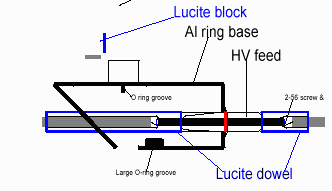
There was a slight bevel (not shown), made with the tip of a drill bit,
which let the tip of the glass nest in the Lucite. Drill bits aren't
ideally suited to precision machining, which was called for. A small
chip was made in the bevel. It was enough to allow a short.
A new dowel was cut and the deep 3/8" bevel which matched the end of the
glass feed precisely was slowly turned on a lathe. High voltage is
extremely
unforgiving!










